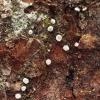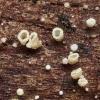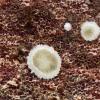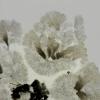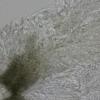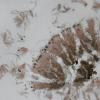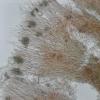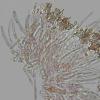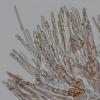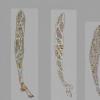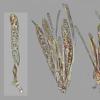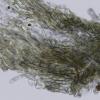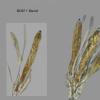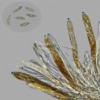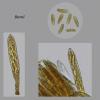
11-11-2025 20:16
Bohan JiaHi, lastly I have found these tiny yellow decayin

09-11-2025 13:20
Hello.A tiny ascomycete, appearing as erupting gra

08-11-2025 00:29
 Francois Guay
Francois Guay
I found this species in Quebec, Canada, on herbace

04-11-2025 09:07
Hello.A suspected Hymenoscyphus sprouting on a thi

04-11-2025 12:43
 Edvin Johannesen
Edvin Johannesen
Hi! One more found on old Populus tremula log in O
Hyaloscypha cf
Petra Eimann,
03-08-2022 12:22
I am literally stumped by this find. I hope that I can get help here to identify it. The find is from 19.03.2022, found on bark (spruce?) Preparation in KOH slightly yellowish discoloured, spore size on average 11.05 x 3.72 / Q=2.99, hook+ IKI+ I suspect that it is a Hyaloscypha, but cannot find a suitable species.
LG Petra
Kosonen Timo,
04-08-2022 08:12

Re : Hyaloscypha cf
Hi,
Did you observe any amyloid "nodules" in the excipulum? Similar as in Eupezizella aureliella. Your collection appears to have yellow exudate around the hairs. You could compare to Eupezizella britannica.
And once on it, you could also compare to Resinoscypha variepilosa (previously Protounguicularia/Arachnopeziza). Or to Mimicoscypha (lacrimiformis?). These are often on conifers as well. Especially R. variepilosa.
The hairs remind me of Resinoscypha, but the very dark basal excipulum I dont recall. Yes, Hyaloscyphaceae, but indeed not a Hyaloscypha!
bw
Timo
Hans-Otto Baral,
04-08-2022 10:07

Re : Hyaloscypha cf
Difficult for me to say with this docu of dead material.
I am reminded of Psilocistella quercina, what about this?
Quijada et al. 2014 Psilocistella quercina AscomyceteOrg 06-05 143-146
But I wonder about the greybrown basal excipulum
Petra Eimann,
04-08-2022 12:05
Re : Hyaloscypha cf
Hi,
thank you very much for the advice. There are no amyloid "nodules" in the excipulum.
The fruiting bodies are on the bark of freshly cut spruce. They have developed after a few weeks in a damp chamber. Maybe some characteristics are different from "normally" grown fruiting bodies. I will study all the clues and hope to come to a conclusion. Thank you again.
LG Petra
thank you very much for the advice. There are no amyloid "nodules" in the excipulum.
The fruiting bodies are on the bark of freshly cut spruce. They have developed after a few weeks in a damp chamber. Maybe some characteristics are different from "normally" grown fruiting bodies. I will study all the clues and hope to come to a conclusion. Thank you again.
LG Petra

